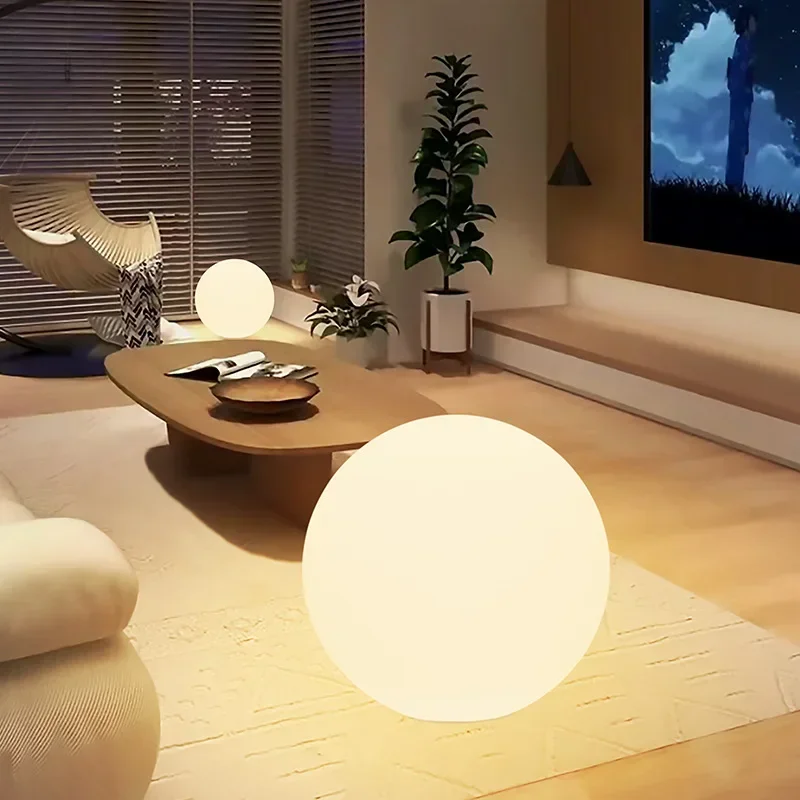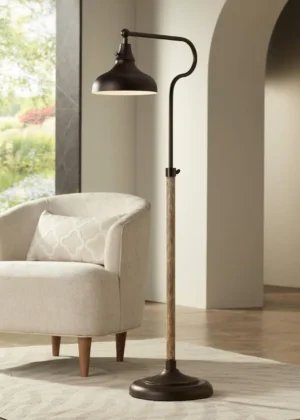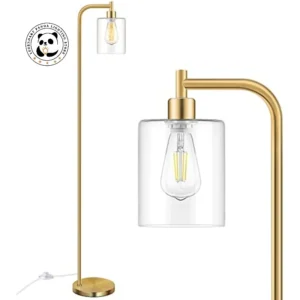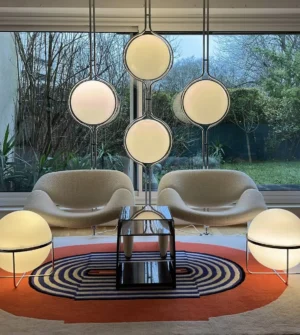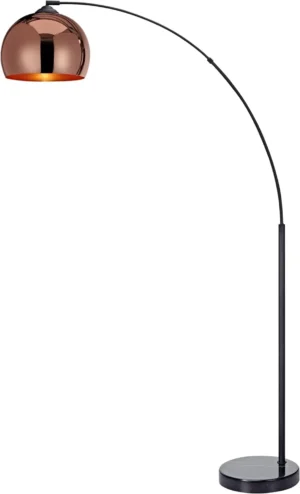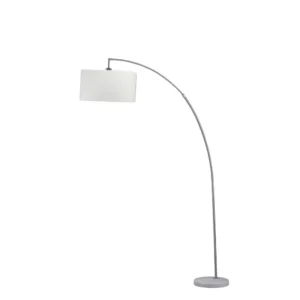Introduction: Arc Lamps as Modern Space-Saving Solutions
In today’s urban living landscape, where square footage comes at a premium, making the most of available space has become essential. Arc floor lamps have emerged as a brilliant solution for those looking to maximize their living areas without sacrificing quality lighting. These distinctive fixtures, characterized by their sleek bases and gracefully curved arms that extend outward and overhead, offer a perfect blend of form and function.
Unlike traditional lighting options that demand significant floor or surface space, arc lamps provide several key advantages for compact living:
- Minimal footprint while delivering maximum illumination
- Overhead lighting without permanent installation
- Versatile positioning that eliminates the need for additional furniture
- Striking visual appeal that enhances rather than clutters a space
As urban dwellings continue to shrink in size—with the average apartment in major cities decreasing by nearly 10% in the last decade—finding furniture and fixtures that serve multiple purposes has never been more important. The evolution of arc lamps from their traditional counterparts represents a thoughtful response to these changing living conditions.
For those navigating the challenges of small-space living, understanding the choosing perfect arc floor lamp process can dramatically transform how you experience your home environment. Let’s explore how these elegant lighting solutions can illuminate your space while helping you reclaim valuable square footage.
How Arc Lamps Save Space: The Design Advantage
The space-saving magic of arc lamps lies in their ingenious structural design. Unlike conventional floor lamps that stand directly beside seating areas—often competing for the same valuable floor space—arc lamps operate on a fundamentally different principle.
The typical arc lamp features a compact base measuring just 8-12 inches (20-30 cm) in diameter, significantly smaller than traditional floor lamps that often require 12-18 inches (30-45 cm) of floor space. This slender profile allows the lamp to tuck neatly into corners or alongside furniture without creating obstacles in your living area.
From this minimal base rises the lamp’s defining feature: a gracefully curved arm that extends outward and upward to position the light source directly over your desired area. This clever cantilever design employs counterweight technology—with the weighted base balancing the extended arm—creating a stable lighting solution that defies conventional space requirements.
Perhaps most impressively, this design eliminates the need for additional furniture pieces like end tables or console surfaces that would otherwise be necessary to support table lamps. By combining the light source and its support structure into one freestanding unit, arc lamps effectively reduce the furniture footprint in your room by 25-40%.
Many adjustable arc floor lamp designs take this space efficiency even further by incorporating features like telescoping arms, swivel bases, or height adjustment mechanisms. These adaptable elements ensure that regardless of your room’s specific dimensions or furniture arrangement, you can position illumination precisely where needed without introducing additional pieces into your carefully planned space.
The engineering behind these lamps transforms what would typically be dead space—the area above and between furniture—into functional lighting zones, essentially adding a new dimension to your room’s usable area.
Maximizing Floor Space: The Primary Advantage
In small living environments, every square foot matters. The primary advantage of arc lighting is how effectively it preserves valuable floor space while delivering exceptional illumination. Traditional lighting setups often require dedicating specific floor areas solely to lighting fixtures or supporting furniture, but arc lamps change this equation entirely.
The slender profile of an arc lamp base—typically occupying less than one square foot of floor area—stands in stark contrast to the space required by a standard side table paired with a table lamp, which commonly demands 3-4 square feet. This difference becomes particularly significant in apartments or condos where total living space may be under 800 square feet.
The strategic placement of arc lamps further enhances their space-saving benefits. By positioning these fixtures alongside walls or in room corners, they leave the central floor area completely open, creating both physical and visual spaciousness. This unobstructed floor plan facilitates easier movement through the room and contributes to a psychological sense of expansiveness.
For particularly tight spaces, such as studio apartments or compact living rooms, this saved floor space can mean the difference between a cramped, cluttered environment and one that feels open and breathable. Many interior designers note that freeing up just 5-10 square feet in a small room can dramatically change how comfortable the space feels to occupy.
The minimalist arc floor lamp designs available today take this space-conscious approach even further, with ultra-slim profiles and clean lines that visually recede rather than dominate the room. The physical space savings combine with this visual lightness to create an environment that feels significantly more open and spacious than its actual dimensions might suggest.
Beyond the measurable square footage saved, this approach to lighting contributes to a more organized, intentional living space—something particularly valued in urban environments where external clutter and chaos often prevail.
Creating Overhead Light Without Installation
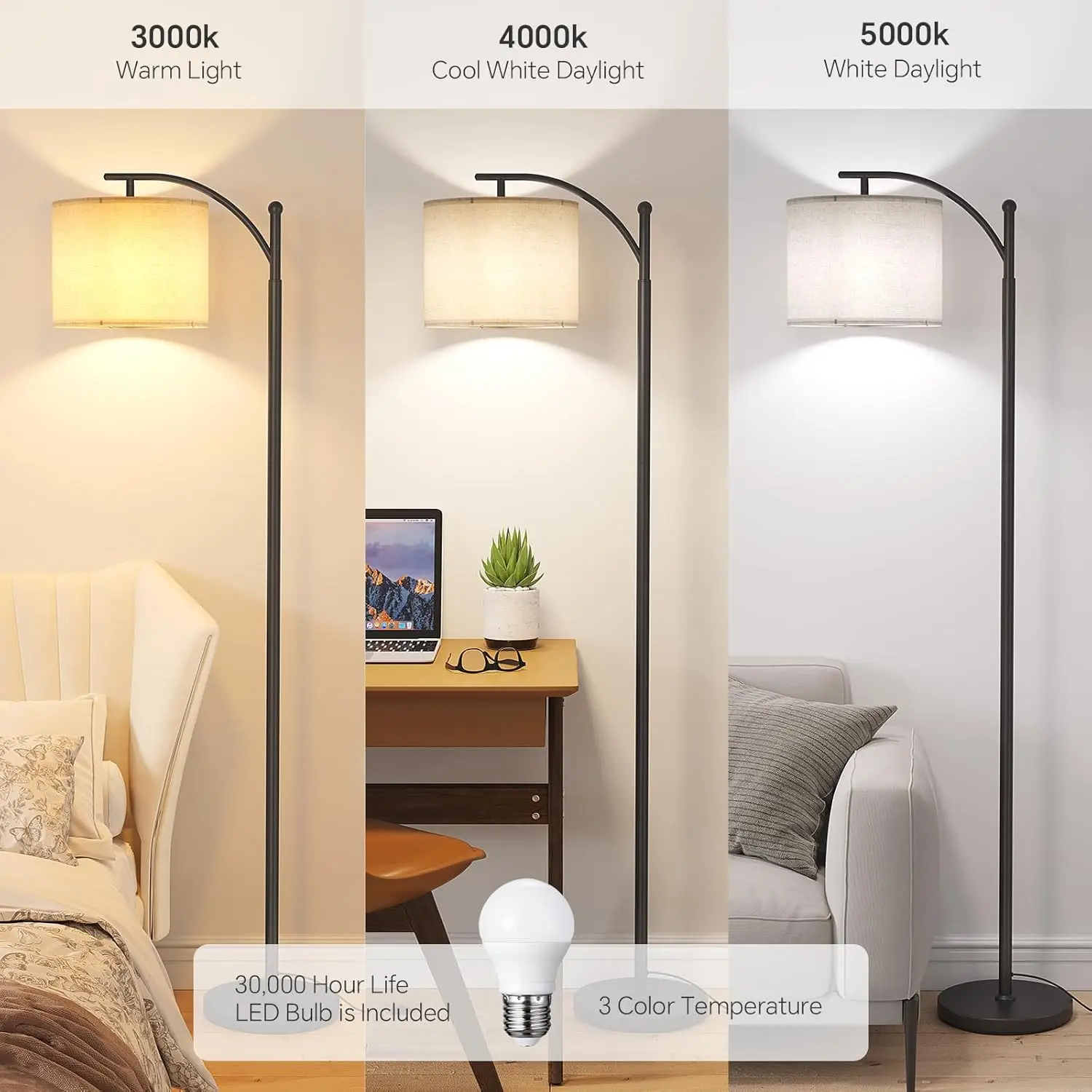
One of the most remarkable benefits of arc lamps is their ability to provide directed overhead lighting without requiring any permanent installation. This advantage is especially valuable for renters, those in temporary living situations, or anyone who prefers to avoid the commitment and expense of hardwired lighting fixtures.
Arc lamps deliver several distinct advantages in this category:
- They provide downward-directed light similar to pendant lights or chandeliers without requiring electrical work
- The illumination can be positioned exactly where needed—over a dining table, reading chair, or workspace
- When housing situations change, the lighting moves with you rather than staying behind
- No need for professional installation saves both time and money (typically $150-300 for basic pendant installation)
For the many urban dwellers who rent their homes, this represents a significant opportunity to improve lighting conditions without risking security deposits or lease violations. The portable nature of arc lamps means you can enjoy quality overhead illumination that would otherwise require landlord permission and permanent modifications.
Understanding the relationship between ceiling height considerations arc lamps is important when selecting the right model. While most standard arc lamps work well in spaces with 8-9 foot (2.4-2.7 meter) ceilings, specialized models are available for both lower and higher ceilings.
The adaptability factor cannot be overstated—unlike fixed overhead fixtures, arc lamps can be repositioned as your needs change. This season’s reading nook can become next season’s dining area simply by moving your light source rather than undertaking a costly lighting renovation project.
For those seeking even more flexibility, many contemporary arc designs include adjustable height mechanisms and swiveling heads, allowing for precise control over both the location and direction of light. This versatility simply isn’t possible with traditional ceiling fixtures, which remain fixed regardless of how your space usage evolves.
Strategic Arc Lamp Placement for Small Spaces
Maximizing the space-saving benefits of arc lighting depends significantly on strategic placement. With thoughtful positioning, these versatile fixtures can transform how a room functions while minimizing their physical footprint.
Behind sofas, arc lamps find perhaps their most natural home. Positioned 6-8 inches (15-20 cm) behind seating, the lamp’s base remains out of the traffic path while its arm extends forward to illuminate activities like reading or conversation. This arrangement eliminates the need for end tables and table lamps on either side of the sofa—potentially reclaiming 5-6 square feet of floor space in a typical living room setup.
Corner placement offers another excellent strategy for space-conscious rooms. By tucking the lamp base into a corner, you utilize an often underused area of the room while allowing the light source to extend toward the center where illumination is needed. This approach works particularly well in studio apartments where corners might otherwise become dead space.
Wall-adjacent positioning represents a third effective approach. Placing the lamp’s base flush against a wall allows the light to arc outward without creating any obstacle to movement through the room. This technique is especially valuable in rooms with limited square footage and defined traffic patterns.
When optimizing compact living space-saving arc lamps becomes the priority, consider these practical placement guidelines:
- Ensure a minimum clearance height of 6.5 feet (2 meters) under the lowest part of the arc for safe passage
- Position the light source approximately 26-30 inches (65-75 cm) above the surface being illuminated for optimal task lighting
- For dining areas, center the lamp approximately 30-36 inches (75-90 cm) above the table surface
- In multi-purpose rooms, select a location that allows the lamp to serve multiple areas as needs change
These strategic placement techniques transform arc lamps from merely attractive fixtures into essential space-optimization tools for small living environments.
Creating Functional Zones with Arc Lighting
In open-concept spaces, creating distinct functional areas without physical barriers presents a significant challenge. Arc lamps excel at establishing these visual boundaries through directed light, effectively carving out separate zones without walls or room dividers that would consume valuable square footage.
The focused illumination provided by an arc lamp naturally draws attention to specific areas, creating psychological boundaries that help define how spaces are used. A reading nook in the corner of a studio apartment becomes a distinct “room” when illuminated by a carefully positioned arc lamp. Similarly, a home office area within a living room gains definition and purpose under the concentrated light of an arched fixture.
This zoning technique proves particularly valuable in studio apartments or loft spaces where traditional room divisions are absent. By positioning arc lamps strategically, residents can create the functional equivalent of separate rooms for dining, relaxing, working, and sleeping—all without sacrificing the spacious feeling of the open layout.
The versatility of LED arc floor lamp options enhances this zoning capability through adjustable brightness levels and sometimes even color temperature settings. This allows for creating different moods within various zones—brighter, cooler light for work areas and warmer, dimmer illumination for relaxation spaces.
What makes this approach particularly valuable for space-challenged environments is the ability to instantly redefine these zones as needs change. Unlike fixed room dividers or furniture arrangements that lock a space into specific uses, arc lamps can be repositioned in moments to transform the function of an area:
- Morning: Position over a dining table for breakfast
- Afternoon: Swing to illuminate a workspace for productivity
- Evening: Adjust to create ambient lighting for relaxation
This adaptability ensures that compact living spaces remain flexible enough to serve changing needs without requiring multiple specialized lighting fixtures that would otherwise consume precious space and resources.
Arc Lamps vs. Traditional Lighting Options: Space Comparison
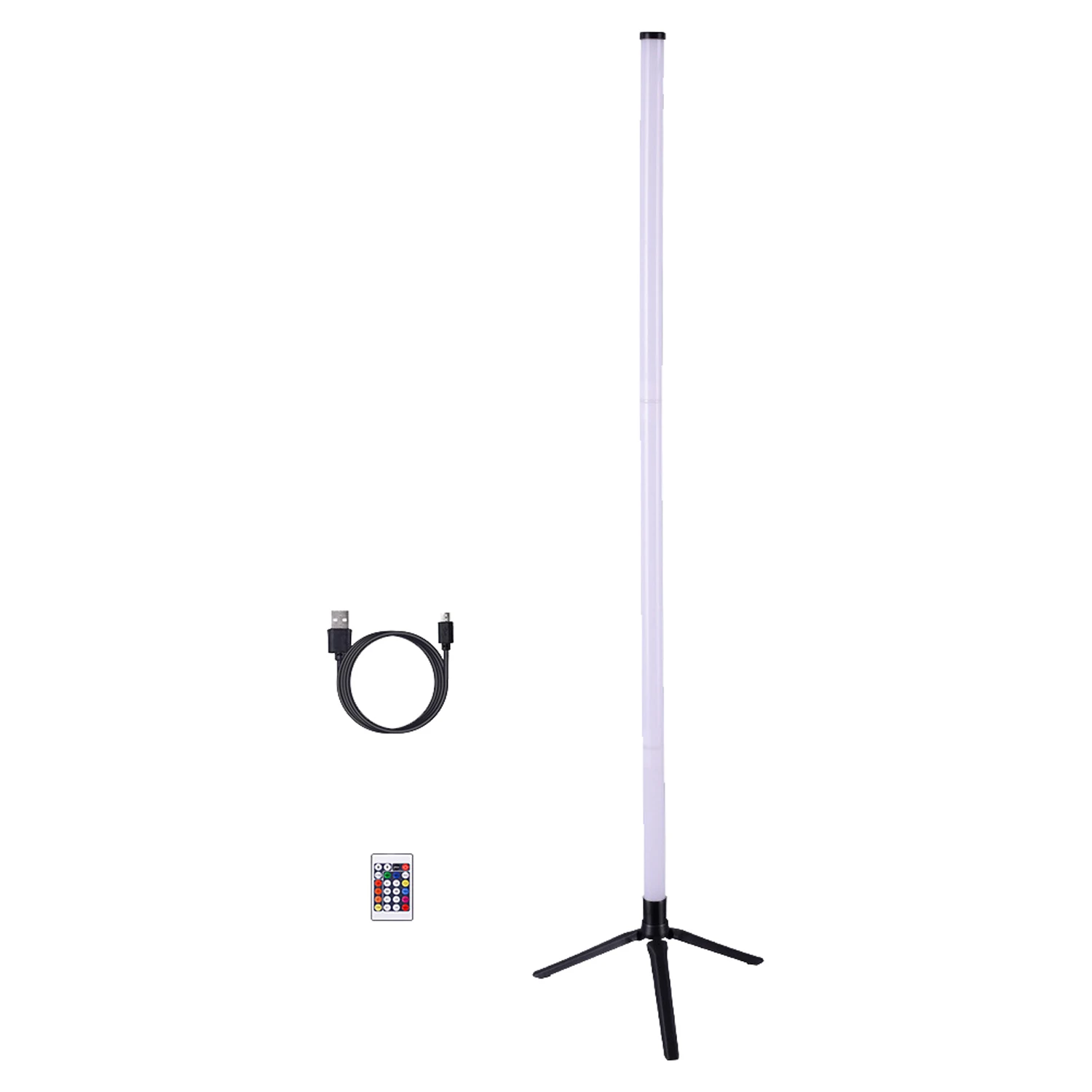
When evaluating lighting options for space-constrained environments, understanding how arc lamps compare to traditional alternatives becomes critical. Each option presents distinct space implications that directly impact both the functional and perceived dimensions of a room.
| Lighting Type | Floor Space Required | Additional Furniture Needed | Installation Requirements | Visual Impact on Spaciousness |
|---|---|---|---|---|
| Arc Floor Lamp | 8-12 inches diameter (base only) | None | None – freestanding | Opens up floor space, draws eye upward |
| Traditional Floor Lamp | 12-18 inches diameter | None | None – freestanding | Creates visual and physical obstacle in room flow |
| Table Lamp | Minimal lamp footprint | Side table (1.5-4 sq ft) | None – freestanding | Consumes valuable surface space |
| Pendant Light | None | None | Ceiling installation, wiring | Opens floor space but requires installation |
| Wall Sconce | None | None | Wall installation, wiring | Opens floor space but requires installation |
The space efficiency of arc lamps becomes particularly evident when considering their light distribution capabilities. While traditional floor lamps illuminate a relatively small radius directly around their position, arc lamps project light from above, covering a significantly larger area from a single source. This expanded coverage means fewer fixtures are needed overall—another space-saving advantage.
Many homeowners discover that are arc floor lamps good for their particular space constraints after realizing that these fixtures provide approximately 30-40% more usable illuminated area than comparably sized traditional floor lamps. This increased efficiency directly translates to fewer needed fixtures and less overall space dedicated to lighting.
For renters especially, the combination of no installation requirements with minimal floor footprint makes arc lamps uniquely advantageous compared to alternative lighting solutions that would either consume valuable floor/surface space or require permanent modifications to the dwelling.
Enhancing Small Space Aesthetics with Arc Lamps
Beyond their practical space-saving benefits, arc lamps make significant contributions to the visual aesthetics of compact environments. Their distinctive silhouettes introduce an architectural element that enhances spatial perception in several key ways.
The vertical presence of arc lamps naturally draws the eye upward, creating a sense of increased ceiling height and overall volume within a room. This vertical emphasis counters the horizontally constrained feeling often experienced in smaller spaces, effectively expanding the perceived dimensions of the environment.
The sculptural quality of contemporary arc floor lamp designs allows them to function simultaneously as practical lighting sources and artistic focal points. This dual-purpose nature eliminates the need for additional decorative elements that would otherwise occupy valuable space. One well-chosen arc lamp can replace both a traditional light fixture and a separate sculptural accent piece—a significant space-saving consolidation.
The variety of available finishes and materials allows these fixtures to complement virtually any interior style:
- Brushed nickel or chrome finishes for contemporary minimalist spaces
- Warm brass tones for mid-century modern aesthetics
- Matte black for industrial or Scandinavian-inspired interiors
- Natural marble bases for adding luxury without bulk
The graceful curves of arc lamps also introduce a welcome organic element that softens the often boxy, angular confines of small urban apartments. This visual counterpoint to straight walls and rectangular furniture creates a more balanced, harmonious environment without consuming additional square footage.
Perhaps most importantly, the open, airy design of most arc lamps creates less visual weight than traditional lighting options. Where a standard floor lamp with a substantial shade might feel bulky and space-consuming, the slender profile and negative space within an arc lamp’s design contribute to a lighter, more spacious atmosphere.
Beyond Space-Saving: Additional Benefits for Compact Living
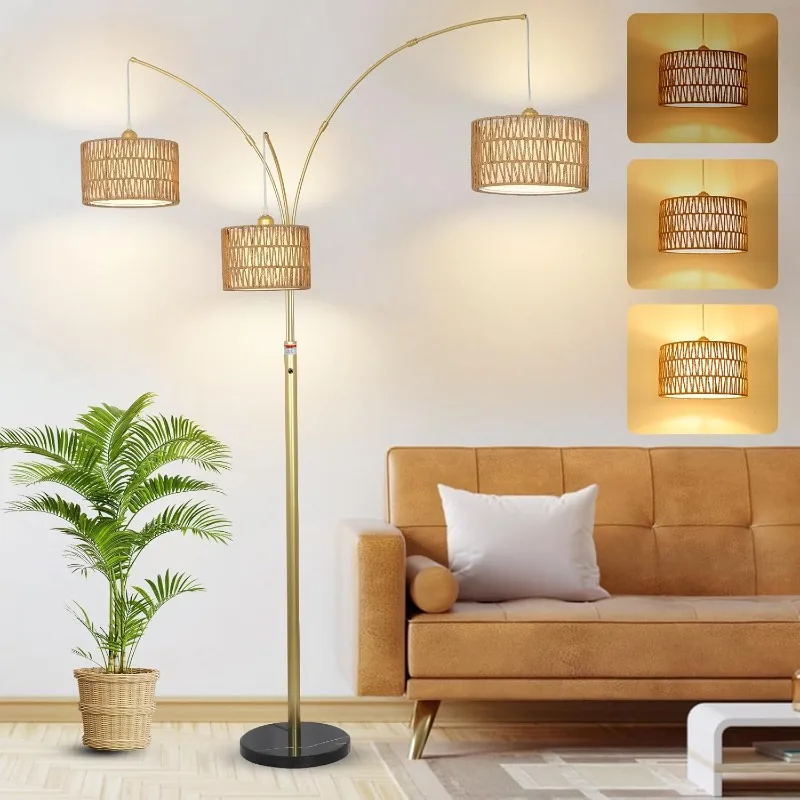
While space efficiency remains the primary advantage of arc lamps in small environments, these versatile fixtures offer several complementary benefits that enhance their value for compact living situations.
The directional versatility of modern arc designs provides functional flexibility that traditional lighting often lacks. Many contemporary models feature:
- Adjustable height mechanisms to accommodate different activities
- Swiveling or rotating heads for redirecting light as needed
- Articulating arms that can be repositioned for different furniture arrangements
- Dimming capabilities to transition between task lighting and ambient illumination
Energy efficiency represents another significant advantage, particularly in smaller dwellings where every utility cost matters. Most current arc lamp designs accept LED bulbs or come with integrated LED technology, consuming up to 80% less electricity than traditional incandescent options while generating significantly less heat—an important consideration in compact spaces where temperature management can be challenging.
The portability of arc lamps makes them ideal companions for those who move frequently, a common reality for many urban dwellers in smaller apartments. Unlike built-in lighting solutions that stay behind with each move, arc lamps represent a lighting investment that travels with you, adapting to each new space.
Their design longevity also deserves mention—the fundamental arc silhouette has remained relevant for decades, making these fixtures less likely to become dated or require replacement as trends change. This timeless quality makes them a sound investment despite their sometimes higher initial cost compared to basic lighting options.
For a comprehensive understanding of all relevant factors, the perfect arc floor lamp guide explores these additional benefits in greater depth, helping you identify which features matter most for your specific living situation.
Adjustable Arc Floor Lamp, Bronze Arc Floor Lamp
Price range: $440.95 through $558.52 Select options This product has multiple variants. The options may be chosen on the product pageBrass Arc Floor Lamp, Contemporary Arc Floor Lamp, LED Arc Floor Lamp
Price range: $490.72 through $522.04 Select options This product has multiple variants. The options may be chosen on the product pageChrome Arc Floor Lamp, LED Arc Floor Lamp
Price range: $304.95 through $1,210.40 Select options This product has multiple variants. The options may be chosen on the product pageContemporary Arc Floor Lamp, Large Arc Floor Lamp, Marble Base Arc Floor Lamp
$224.94 Select options This product has multiple variants. The options may be chosen on the product pageContemporary Arc Floor Lamp, Silver Arc Floor Lamp
$459.99 Select options This product has multiple variants. The options may be chosen on the product pageLED Arc Floor Lamp, Rattan Arc Floor Lamp
$313.58 Select options This product has multiple variants. The options may be chosen on the product page
Choosing the Right Arc Lamp for Your Space Constraints
Selecting the ideal arc lamp for your specific spatial limitations requires careful consideration of several key factors. The right choice will maximize space-saving benefits while ensuring the fixture functions properly within your environment.
When evaluating potential options, consider these essential measurements:
- Overall height: Ensure a minimum of 2-3 inches (5-7.5 cm) clearance between the lamp’s highest point and your ceiling
- Arc reach: Measure the horizontal distance from where the base will sit to the area requiring illumination
- Base diameter: Confirm you have adequate floor space at your preferred placement location
- Weight: Heavier bases (15-25 lbs/7-11 kg) provide greater stability but may be more challenging to reposition
For extremely compact spaces, look for models with smaller base diameters (under 10 inches/25 cm) and shorter arc reaches (under 40 inches/100 cm). These scaled-down proportions maintain the space-saving benefits while fitting comfortably within tighter confines.
Stability concerns become particularly important in small spaces that may include pets, children, or high traffic. Models with low centers of gravity and wider bases offer greater resistance to tipping, an important safety consideration in limited quarters where bumping into furniture is more likely.
To achieve optimal balance between size and functionality, many find that dimmable arc floor lamp options provide the greatest versatility in small spaces. The adjustable light intensity allows the same fixture to serve multiple purposes—from bright task lighting for working to subtle ambient illumination for entertaining—without requiring additional lamps that would consume precious floor space.
When selecting materials and finishes, consider how they’ll interact visually with your limited space. Reflective metal finishes can help bounce light around the room, enhancing brightness, while transparent or light-colored shades maintain an airy quality that won’t visually weigh down the space.
Is an Arc Lamp Right for Every Small Space? Considerations and Limitations
While arc lamps offer impressive space-saving benefits, they aren’t universally ideal for all compact living situations. Understanding their limitations helps determine whether they’re appropriate for your specific circumstances.
What minimum ceiling height is required for an arc lamp?
Most standard arc lamps need at least 7 feet (213 cm) of ceiling clearance to function properly. In spaces with lower ceilings, the arc may extend too close to the ceiling, creating an uncomfortably cramped visual effect and potential heat concerns with certain bulb types.
Are arc lamps stable enough for homes with active children or pets?
This depends on the specific model. While many contemporary designs feature weighted bases specifically engineered for stability, very lightweight budget models may be prone to tipping if bumped forcefully. In extremely high-traffic areas or homes with particularly energetic children or large pets, wall-mounted swing arm lamps might provide a safer alternative.
Can arc lamps adequately illuminate larger rooms despite their space-saving design?
There are limitations to coverage. A single arc lamp typically illuminates an area of approximately 30-40 square feet (2.8-3.7 square meters) effectively. Larger rooms may require multiple fixtures or supplemental lighting sources, potentially offsetting some of the space-saving advantages.
What about extremely narrow spaces like hallways?
Traditional arc designs may not work well in very narrow passages where their curved arms could create obstacles. In these instances, slimmer wall sconces or recessed lighting might be more appropriate space-saving options.
Understanding what look arc floor lamp works best requires evaluating both your spatial constraints and functional requirements. For spaces with significant limitations that make arc lamps impractical, consider alternatives like wall-mounted reading lights, slim-profile track lighting, or ultra-compact clip lights that can attach to existing furniture.
How to Maintain and Clean Arc Lamps in Tight Spaces
Maintaining an arc lamp in a compact living environment presents unique challenges, but with the right approach, you can keep your fixture looking and functioning its best without needing excessive space for cleaning operations.
Follow these space-conscious maintenance steps:
- Use an extendable duster with a flexible head to reach the upper portions of the lamp without needing to move furniture or use a ladder
- For more thorough cleaning, place a small drop cloth (3×3 feet/1×1 meter) beneath the lamp to catch any dust or cleaning solution
- Apply cleaning solutions to your cloth rather than spraying directly onto the lamp to avoid overspray in your limited space
- Keep a compact cleaning kit (microfiber cloths, small duster, appropriate cleaners) stored specifically for lamp maintenance to avoid searching for supplies
For metal components, a slightly damp microfiber cloth followed by a dry cloth provides effective cleaning without requiring harsh chemicals that would need ventilation. Glass or acrylic shades can be wiped with a solution of mild dish soap and water on a soft cloth, then dried thoroughly to prevent water spots.
Proper maintenance contributes directly to the safety of your arc lamp. Regular checks of all connections and adjustment mechanisms help ensure stability—particularly important in small spaces where preventing arc lamps tipping becomes essential for both the fixture’s longevity and your safety.
When cleaning bulbs or adjusting lamp heads, avoid pulling or pushing on the arc itself, as this can potentially affect the balance and stability of the entire fixture. Instead, handle only the designated adjustment points specified by the manufacturer.
By incorporating these maintenance practices into your regular cleaning routine, you’ll preserve both the appearance and functionality of your space-saving lighting solution without requiring additional storage space for specialized cleaning equipment or creating temporary disruption in your carefully organized compact living environment.

